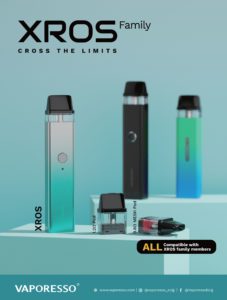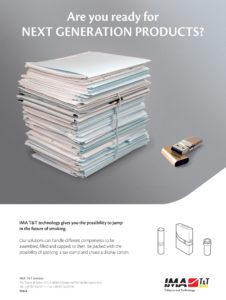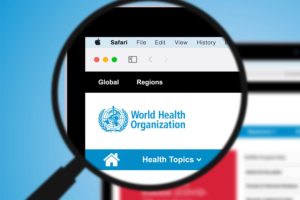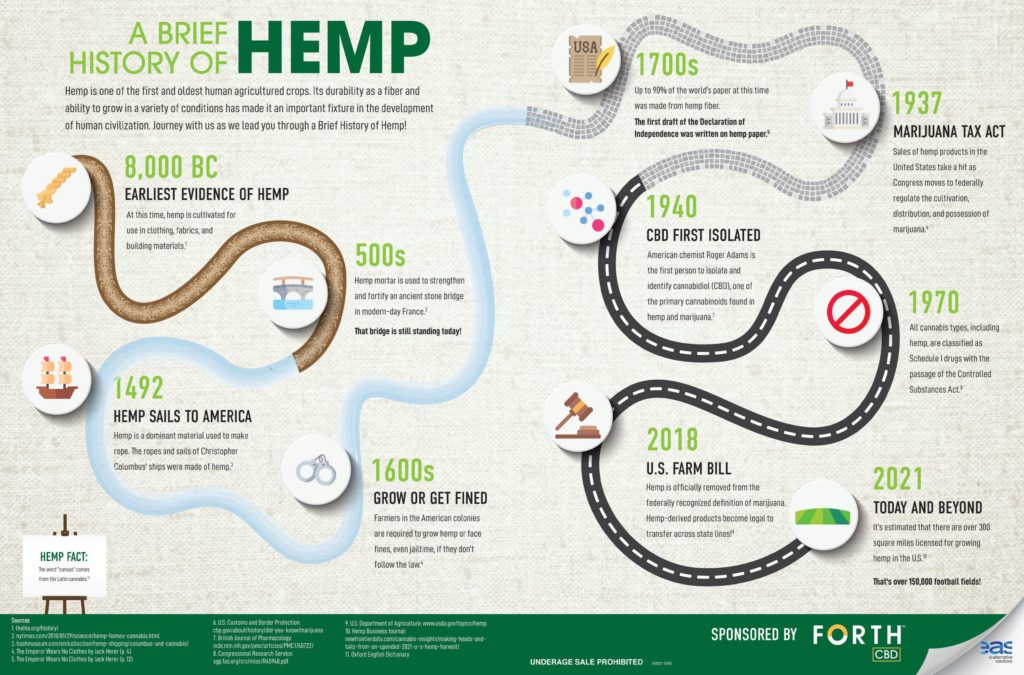
TMA’s webinar brings industry experts together to share their insights into the rapidly changing nicotine business.
Vapor Voice staff report
The nicotine industry has been struggling to keep up with the growing number of challenges to its existence. From potential new taxes to marketing denial orders (MDOs), mailing restrictions, misinformation and the rise of synthetic products, the ever-changing regulatory landscape has forced millions of products off the market and hundreds of businesses to close.
During TMA’s “From Chance to Change” webinar, held Nov. 17–18, several industry experts discussed the current state of the nicotine industry and what it may look like moving forward. Attendees were updated by the U.S. Food and Drug Administration on its progress on premarket tobacco product applications (PMTAs) as well as the confusion surrounding the issuing of MDOs and why some of those orders have either been rescinded or stayed by a court.
Speakers explained how a proposed tax bill, misinformation being spread by anti-vaping groups and the media, and the growing number of manufacturers moving toward synthetic nicotine is creating confusion for consumers and business owners alike. Some speakers even suggested that if the current pace continues, many former smokers will return to more deadly combustible cigarettes.
FDA Update: Mitch Zeller, director of the FDA’s Center for Tobacco Products
TMA’s webinar began with a bang. Mitch Zeller, director of the FDA’s Center for Tobacco Products (CTP) outlined the progress of the agency’s review of PMTAs that were submitted by the Sept. 9, 2020, deadline. Zeller also provided an unprecedented behind-the-scenes peek into the center as it processed millions of PMTAs.
After a court order that was the result of a lawsuit brought by several anti-vaping groups, the FDA was ordered to complete applications within one year of the deadline. Because companies were not required to submit their applications in a particular way, the agency had to be ready to process for a wide variety of formats. “We had to prepare operationally, technically and logistically to ‘ingest’ all those applications,” said Zeller, adding that the agency was thrilled its submission system did not collapse under the volume of last-minute applications.
“We had to prepare substantively for how the scientific review was going to be conducted for a category of products that previously had not had to submit applications to us,” said Zeller. “The preparation for both the operational and the substantive was daunting.”

Products
The FDA has by now acted on the vast majority of applications, sending refuse to file letters, issuing MDOs or, in the case of Vuse Solo, granting marketing orders. “We are down to 80,000 products—most of them in the final stages of review,” said Zeller. Those still-pending applications, he acknowledged, include ones submitted by the companies with the largest market shares because they tend to be the largest and most complex applications.
Zeller said the agency has a particular concern for flavored electronic nicotine-delivery system (ENDS) products, other than tobacco, because “we know that they pose a known and significant risk” when it comes to appeal, popularity, uptake and use by youth. He says that youth who are using ENDS products are more likely to use a flavored product than adults. “A company that wants to be able to continue to market a flavored ENDS product is going to have to have robust and reliable evidence that shows that the potential benefits of that product for adult smokers would outweigh the significant risks that are built in when it comes to kids,” Zeller said. “The benefit-risk equation for tobacco-flavored products is different. It raises a different set of considerations because we don’t have the same built-in concern on the front end about the popularity of tobacco-flavored ENDS products with kids.”
Zeller also addressed the fast-growing synthetic nicotine segment. He said synthetic nicotine could be considered a component of e-cigarettes, which would allow the FDA to regulate the product. Additionally, he said the agency was concerned about the use of synthetic nicotine to avoid regulation and enforcement and is considering its options in dealing with the issue.
The Tobacco Control Act defines a tobacco product as anything that’s “made or derived from tobacco that is intended for human consumption, including any component, part or accessory of a tobacco product.” Zeller said that components and parts could include everything from coils and batteries to all the ingredients comprised in producing e-liquids (such as flavorings and vegetable glycerin) even if the product does not contain nicotine.
“That’s an assessment that we need to make on a case-by-case basis based upon the totality of all the information that we have,” said Zeller. Another challenge, he said, is that synthetic nicotine is now of such high quality that it has become difficult to differentiate it from nicotine derived from natural tobacco. “Historically, that hasn’t been a problem,” he said. “It’s not a problem now, but it could become a challenge for us going forward.”
Zeller explained that nicotine is comprised of two isomers: R and S. Tobacco-derived nicotine is 99 percent S, and early synthetic nicotine had a 50-50 split between R isomers and S isomers. However, newer versions of synthetic nicotine have much higher proportions of S isomers (as high as 99.9 percent pure), making it harder to tell them apart from natural nicotine. Tobacco-derived nicotine is also becoming higher in quality.
“Tobacco-derived nicotine is now being made available at a higher quality … pharmaceutical grade from a purity standpoint. And with that, it may be harder for us to see that chemical fingerprint, if you will, whether it’s tobacco DNA or tobacco-specific nitrosamines,” he said. “We could see this as a problem going forward. Coupled with the clear intent of certain companies to do this to evade FDA regulation … We are concerned about what this means for product regulation, for the public health, and a product like Puff Bar proudly proclaiming its use of synthetic nicotine, [and] being the No. 1 brand used by youth.”
In the short term, Zeller said the FDA is talking internally about how to best address the growing number of products that are using synthetic nicotine to skirt FDA regulation. He said the agency is also responding to questions from Congress about synthetic nicotine and providing technical assistance to members when asked.
“There are a lot of companies out there that pride themselves on playing by the rules. They have every right to expect that the playing field is going to be level. That’s where we come in with our compliance and enforcement authorities,” Zeller said. “We agree that one of the most important things that we can do, using our compliance and enforcement tools, is to level the playing field and to have our actions [in the synthetic nicotine space], hopefully, serve as a deterrent. There’s nothing that I can say from a compliance enforcement standpoint on synthetic nicotine other than we have ongoing investigations.”
Zeller also explained that the agency is now facing 45 open lawsuits (as of this writing) by companies that had received MDOs. The lawsuits are based on how the agency reviewed PMTA data and adding a new requirement for longitudinal and cohort studies. Zeller said the agency must work to make “whatever decisions come out” be the right decisions. “Whether it be a marketing denial order that could lead to a lawsuit from a company or a marketing granted order that could conceivably lead to a lawsuit from another sector,” he said. “Our review continues while we are dealing with all the lawsuits that have been filed.”
Panel One: An Applicant’s Perspective
The first panel discussion of TMA’s online seminar, moderated by Jim Solyst, principal of JMS Scientific Engagement, debated the status quo of PMTAs from an applicant’s perspective. The panelists included Brittani Cushman, senior vice president, general counsel and secretary at Turning Point Brands; Beth Oliva, partner at Fox Rothschild; Brian Erkkila, director of regulatory science at Swedish Match; and John Pritchard, vice president of regulatory science at 22nd Century Group.
While all participants expressed appreciation for the FDA’s daunting workload, some voiced disappointment with the fact that many applications appear to have received only a perfunctory “Fatal Flaw” review. The panelists were disturbed by the findings that the agency, rather than reviewing a submission on its merits, simply searched for the presence or absence of certain studies.
Cushman said that the “idea that so many of the applications were reviewed with an eye toward this so-called Fatal Flaw analysis” didn’t “feel like the right direction” for the PMTA review process.
The FDA admitted it made an error in TPB’s PMTA review, and TPB did, in fact, submit studies that the agency decided during the PMTA process were needed after saying for years that the studies were not required. The FDA then rescinded TPB’s MDO and placed its applications back into substantive review. The agency has since rescinded MDOs for 10 companies and is currently facing at least 45 lawsuits for its handling of the PMTA process.
“The way the review process has played out this far, really, feels like the incentive structure in the nicotine industry has been placed on its head. It seems that the lower risk products are receiving heightened scrutiny, kind of an opaque direction as to what’s sufficient,” explained Cushman. “And it just doesn’t feel like these products are getting a kind of equitable treatment in the space.”
The term Fatal Flaw has been at the center of nearly all lawsuits filed against the FDA for its handling of the PMTA process. Court records submitted in the Triton Distribution v. U.S. FDA case and reviewed by Vapor Voice suggest the agency did not fully review all PMTA data submitted, as required by law, but instead only looked for specific studies relating to flavors and youth use.
A memo dated July 9, 2021, written by Anne Radway, the associate director of the FDA’s Center for Tobacco Products’ Office of Science, states that “based on the information available to date, FDA has determined this evaluation requires evidence that can demonstrate whether an applicant’s new nontobacco-flavored product(s) will provide an incremental benefit to adult smokers relative to the applicant’s tobacco-flavored product(s). In particular, the evidence necessary for this evaluation would be provided by either a randomized controlled trial (RCT) or a longitudinal cohort study. The absence of these types of studies is considered a Fatal Flaw, meaning any application lacking this evidence will likely receive a marketing denial order.”
Radway goes on to explain that due to the large number of PMTAs received, the agency would only conduct a Fatal Flaw review of PMTAs for nontobacco-flavored ENDS products. “The Fatal Flaw review is a simple review in which the reviewer examines the submission to identify whether or not it contains the necessary type of studies. The Fatal Flaw review will be limited to determining presence or absence of such studies; it will not evaluate the merits of the studies,” Radway states. “To decrease the number of PMTAs without final action by Sept. 9, 2021, OS used a database query to identify the top twelve manufacturers with the largest number of pending PMTAs [in the substantive review stage of the process] … Following completion of filing those applications that are filed will immediately initiate Fatal Flaw review.”
Radway also states that for the remaining PMTAs not in [substantive review] for nontobacco-flavored e-liquid products, the FDA will send a “General Correspondence letter requesting the applicant to confirm if their PMTA contains such evidence and, if so, to direct FDA to the location in the application where the studies can be found.”
The 5th Circuit Court of Appeals stayed Triton Distribution’s MDO, reasoning that Triton’s legal challenge is likely to succeed on its merits because the FDA “changed its regulatory requirements throughout the process.” The “switcheroo” to now require a randomized controlled trial and/or a longitudinal cohort study—which the agency previously stated on numerous occasions would not be required—is arbitrary and capricious under the Administrative Procedure Act, according to the court. Its ruling stated that the FDA failed to “reasonably consider the relevant issues and reasonably explain” the MDO.
The court further noted that the FDA failed to consider Triton’s marketing plan, surveys and evidence of potential benefits of flavored e-cigarettes. The FDA also failed to consider the company’s legitimate reliance interests as Triton relied on the FDA’s statements made in numerous public meetings, guidance documents and rulemakings that it did not expect applicants would need to conduct long-term studies to support their PMTAs.
Cushman told the TMA webinar audience that, at the end of the day, the FDA’s regulatory treatment of the various product categories is to the detriment of the adult smoker. “We’re all down in the weeds of this. But it’s difficult to see how we ended up at this point. And it certainly can’t be where anyone wanted this process to play out,” she said. “I think this has led to a lot of detrimental outcomes. You have adults seeing a large number of vapor products being deemed as not appropriate for the protection of public health while seeing no change in [combustible] cigarette offerings in their local c-store … This is being celebrated not only by those who are ignorant to the science, but more perversely, those [who understand the science and should] know better.”
To date, the agency has authorized the marketing of only one vapor product—Vuse Solo, a little-used e-cigarette brand that many consider outdated. Panelists worried about how the public would interpret the lack of determinations on major applications by the agency, citing persistent misunderstanding of reduced-risk products and the continuum of risk by legislators, journalists and even physicians.
“I think there are a whole host of negative outcomes that seem to be quickly heading our way if we don’t all kind of shift the way this process is going,” a panelist said. “The way the review process has played out this far, really, feels like the incentive structure in the nicotine industry has been placed on its head. It seems that the lower risk products are receiving heightened scrutiny, kind of an opaque direction as to what’s sufficient. And it just doesn’t feel like these products are getting a kind of equitable treatment in the space.”
Another panelist suggested the industry should consider what it would do when the next e-cigarette or vaping use-associated lung injury (EVALI) happens, referring to a mysterious outbreak of lung injuries in 2019 that was caused by illicit THC products but tainted the entire industry. Another participant stressed the importance of enforcement after all marketing applications have been decided. If any “yahoo” can sell products without authorization, she said, it would render the investments by the good actors worthless.
Panel 2: The Market Perspective
The second panel of the TMA webinar, moderated by Mary Szarmach, senior vice president of governmental and external affairs at Smoker Friendly, reviewed the market from a retailers’ perspective. The panelists included Don Burke, senior vice president of Management Science Associates; Tom Briant, executive director and legal counsel at the National Association of Tobacco Outlets; and Amanda Wheeler, president of the American Vapor Manufacturers Association.
Burke sketched the latest trends in the nicotine market. The pandemic, he said, makes comparisons with 2020 difficult. With many people working from home last year, sales of cigarettes and large cigars experienced unusual growth, but as people returned to the office in 2021, those trends are starting to level off or are even reversing as vapor sales rise.
One of the biggest trends is that during the pandemic, according to Szarmach, consumers that were vaping went back to combustibles because they could use them more frequently at home. “We expect as we looked at our projection for vape that that would change back,” she said. “That as people returned to work and had more workplace restrictions … those people that used to vape would likely go back to vape.”
MSA data supports her observation. After declines in 2019 and 2020, the vapor industry has grown 10 percent to 15 percent in 2021, and Burke expects the industry to continue its growth into 2022. “Vapor cartridges were up by 18.5 percent. But we’ll tell you this: [Through] 2019 going into 2020, we were seeing some declines in vapor. One of the things to keep in mind is at the end of 2019 was that illegal THC vaping [EVALI] crisis,” said Burke. “That turned a lot of people off of vapor even though it was only an illegal product that caused the issues. No legitimate product caused any problems. It’s about a year and a half now since that occurred … because of that, consumers are starting to forget, vapor is coming back.”
Burke said sales of disposables, which are allowed to contain flavors, were up 28.9 percent, and all-in-one kits are growing. He said vape shop and tobacco outlet sales are also on the rise after many closed or limited hours due to the Covid pandemic. MSA’s research covers approximately 300,000 stores.
“We’re looking at distributor to shipment retail data. In many cases, that’s important because a lot of the convenience stores and some tobacco outlets do not collect their data and therefore it’s very difficult to get a clean read,” he said. “The convenience channel—because they were considered essential businesses in most parts of the U.S.—managed to survive the pandemic and, in fact, now are a larger percentage of stores in the U.S. Also, 71 percent of tobacco volume goes through convenience stores.”
Burke said pods for closed pod systems (cartridges) were up 6 percent in the most recent quarter. He said that during the third quarter of 2021, disposables continued to have strong sales, rising by 21 percent, and he expects those trends to continue. Burke also said cannabis sales grew significantly during 2020 and into 2021, but he didn’t elaborate.
Briant provided a regulatory update, touching on the proposed nicotine tax hike in the Biden administration’s Build Back Better legislation, the FDA’s proposal to ban menthol in cigarettes and flavors in cigars and the status of graphic health warnings, which are currently being challenged in court. Litigation has pushed the implementation date to January 2023, and this could be further extended. Briant noted that there have been no hearings yet on the merits of graphic health warnings.
Asked to analyze vapor retailers’ current predicament, Wheeler drew an analogy with the Hindenburg disaster, which shattered public confidence and marked the abrupt end of the airship era. She cited the avalanche of MDOs, the U.S. Postal Service ban on shipping vapor products and the proposed federal excise tax on vapor products, which would make vapor products more expensive than some cigarettes.
“I thought about how to concisely describe the regulatory impact that vaping has endured in recent months. I realize it’s sometimes tough to summarize the catastrophe. It would be like asking the captain of the Hindenburg blimp which factor was the worst: the lightning, the explosion or the gravity,” she explained. “The tragic reality here is that vaping is suffering through a multipronged attack from the Executive Branch, from Congress and from self-perpetuating activist groups, also from the deep-pocketed donors that bankroll them. Each of those parties are being actively cheered on by an irresponsible news media [that has] ignored its public duty to treat issues of scientific importance and policy with balance and skepticism.”
The panelists agreed that black markets are the inevitable result of the regulatory restrictions placed on vaping products. Flavor bans are driving retailers and consumers to both disposables and synthetic products. Briant said that rather than discouraging overall consumption, flavor bans merely cause consumers to shift their buying practices. “They go elsewhere across the city line to the next town, into the next county. It doesn’t solve a problem. In fact, we have three studies now that show … when you ban all flavors, young adults and underage youth switch back to smoking combustible cigarettes. So, the advocates for these flavor bans are actually creating a new public health problem, but they think they’re going to prevent this.”
Asked what kept them up at night, the panelists named employee safety, flavor bans and lack of enforcement. Szarmach related how a tax increase in Colorado had instantly resulted in more break-ins and robberies at her stores—an unwelcome development at a time when workers were already in short supply. Briant said that local flavor bans drove customers away without affecting total consumption—consumers would simply buy their products elsewhere. Wheeler said Arizona was not enforcing Tobacco-21 legislations, enabling bad actors to do good business.
FDA Update: Matt Holman, director of the FDA’s Center for Tobacco Products Office of Science
One of the things that makes TMA conferences unique is that they often include open interactions with the U.S. Food and Drug Administration. While FDA Center for Tobacco Products (CTP) Director Mitch Zeller provided a general overview, Matt Holman, director of the CTP’s Office of Science, offered a more detailed synopsis of the FDA’s recent actions on premarket tobacco product applications (PMTAs), key considerations in the agency’s “appropriate for the protection of public health” (APPH) determinations and the final rules for PMTAs and substantial equivalence reports.
Holman started off by summarizing the agency’s marketing granted orders (MGOs) to four Verve oral tobacco products—all of which were discontinued by Altria Group in 2019—and R.J. Reynolds Vapor Co.’s Vuse Solo vapor cigarette, the only e-cigarette product to receive an MGO as of this writing. In both cases, he said, the applicant had demonstrated that the products have lower toxicity levels and abuse liability risks than cigarettes along with minimal youth appeal. Both applications were also submitted well before the FDA’s Sept. 9, 2020, PMTA deadline.
“Once we looked at the toxicity of these products and really looked at them in comparison to combusted cigarettes and other smokeless products out there in the market, [we found that] their toxicity was significantly lower than that of the combusted cigarettes and lot of other products out on the market,” Holman told attendees. “The tobacco-flavored e-liquids that received the MGO provided data that showed the appeal of these products to youth is low … We are still applying that overall principle as we determine whether a marketing of new tobacco product is, in fact, APPH.”
Holman said that one of the key areas the agency looks for with vaping products, which constitute nearly all of the current PMTAs still under review, is the balance of youth uptake versus combusted cigarette smokers switching to vapor products. “It’s quite a challenging balance … it’s something that we certainly spent a lot of time really looking carefully at the data and all these PMTAs to determine whether we think youth uptake is very low while intention to switch by combusted cigarette smokers is high,” he said.
Holman also told the webinar audience that compliance for the FDA’s final rules for electronic nicotine-delivery systems (ENDS) went into effect on Nov. 4. He said that while previously applicants could provide a summary of studies that had been run, the new rule requires companies to submit those studies in full. “In the past, before the effective date of this rule, we might have filed a PMTA if they had any information about product perception and use intentions,” Holman explained. “For applications received Nov. 4 or later, not only would you have to have that, but you would have to have given us those actual studies.”
Another change in the OMTA rule highlighted by Holman is a change that allows for recipients of an MDO to rectify the shortcomings in their original application with a supplemental PMTA that cross-referenced the original application, thus streamlining the process for both applicant and reviewer.
“I think a very positive thing for both the regulator and the regulatee is the ability now to submit supplemental PMTAs. If we issue a marketing grant[ed] order for a given product and then that product needs to be modified (such as a change in suppliers), the supplemental PMTA can just cross-reference the original PMTA and just focus on providing us information on that new material. The volume on the supplemental PMTA should be a fraction of the volume of the original PMTA.” said Holman. “[The updated application must include] data and information explaining exactly what’s different in the new material compared to the original material and why that change in material doesn’t raise any public health concerns and ultimately, why the applicant thinks that that material change allows that new product to be APPH.”
Holman also explained that it is important for industry stakeholders to comment on proposed rules and to ask questions concerning any potential misunderstandings. Comments have been the source for several major changes in the final PMTA rule. For example, the agency changed all the terminology from “grandfathered” products to “preexisting” tobacco products.
Products that were in a test market before Feb. 15, 2007, will also now be considered preexisting products, a major change to the rules as test market products were not previously considered “grandfathered.” Lastly, the FDA created a new tobacco product category. “There have been products out there called all different things, such as heat-not-burn and things like that,” he said. “We formally defined those as heated-tobacco products [HTPs] distinct from, for example, vapes.”
Holman said that stakeholders must remember that all data submitted to the FDA must include data that addresses youth use. Such consumption remains “unacceptably high” and “still a major public health concern” for the agency. “I’ve said this time and time again, we really, ultimately, want to get in applications that we can accept, we can file, and put into scientific review,” he said. “We’d like to have all the information we need to conduct our scientific review. And ultimately, make a conclusion about whether, in fact, we think the data supports an APPH [decision].”
Panel 3: Early and Often
Matt Holman also participated in a panel discussion, which also sets the TMA conference apart from other tobacco seminars this year. The “Path to Market” panel discussion, moderated by Altria Client Services Director of Regulatory Advocacy Jennifer Smith, also included Gerry Roerty, vice president, general counsel and secretary of Swedish Match North America; Tara Couch, senior director of dietary supplement and tobacco services at EAS Consulting Group; Elaine Round, vice president of scientific and regulatory affairs at RAI Services Co.; and Kimberly Hesse, tobacco lab testing expert.
One of the takeaways from this session was the importance of starting “with the end in mind.” Getting things right from the beginning will save applicants time and money because even minor product changes involve new, time-consuming applications under the FDA’s pathways. Smith said that her company thinks that science and evidence-based product standards might be one way to accelerate review of PMTAs while also benefiting public health. “Tobacco product manufacturers and adult smokers switching from cigarettes would benefit from product standards that define a baseline for safety and quality for harm reduction products,” she said.
According to Roerty, the first question in the journey to market should be: Can we make this product, and can we make it consistently? Applicants should think about samples and suppliers and conduct environmental assessments. With the FDA seeking greater consumer insights, applicants should look for professional assistance in obtaining such information. And it pays to involve product testers early in the process.
“In order to put an application in, you have to test the product. The second thing is you have to make sure you can demonstrate to the agency that you can consistently make the product,” Roerty explains. “That’s fair. I mean, if you can only make one model of it, and you can never remake it again, then what confidence does the agency have that the test data and the application you gave them is repeatable?”
Couch explained that for a device to meet the requirements of APPH, companies must also focus on adhering to good manufacturing practices (GMP). Section 906(e) of the Food, Drug and Cosmetic Act is dedicated to good manufacturing practice requirements. “What it states there … is that the methods used in and the facilities and controls used for the manufacture, preproduction design validation, including a process to assess the performance of tobacco product, packing and storage of a tobacco product must conform to current good manufacturing practices,” said Couch. “And when you think about [it], GMP starts at the design stage.”
Getting products tested is also a major requirement on the path to PMTA approval. Finding the right lab is as crucial as designing the proper testing regime for a company’s products, according to Hesse. Lab workers may be unfamiliar with a specific product and require explanations on its operations. And then there are safety considerations, said Hesse. She recalled instances of products that sparked and ignited when connected to laboratory machinery.
“That’s going to be one of the first things that you do before you try to even think about filing a PMTA. You’re going to want to find an accredited lab and create a proof-of-concept plan utilizing two different pathing regimes,” said Hesse. “This is where you’ll learn whether or not the regimes work with your device … once we discover how the device interfaces and that the smoking regimes are going to work, they’ll do a little bit of testing at this point to find out whether or not the [pathing] regimes are working.”
The panelists suggested that all data collected from every aspect of a product’s cycle to market should be used effectively. Round said one lesson she learned from Reynolds’ successful Vuse Solo marketing application was that “bridging”—the referencing of existing studies—works, provided that the applicant explained it well. “We’ve seen evidence now, both in the Vuse application and [the] IQOS applications as well, that bridging is accepted from prior versions of products to current versions of products,” Round explained. “As you accumulate data, use it as many ways as possible.” She also advised applicants to generate a volume of information that is “exactly enough and not too much.”
Several panelists mentioned the challenge of obtaining consumer insights in PMTAs. They suggested that the FDA should consider allowing more of that information to be gathered as part of postmarket surveillance, which would have the added benefit of generating more realistic data. “Is there a way to try and streamline some of the requirements to rely more on postmarketing surveillance and reporting and streamlining the PMTA process on the front end?” asked Round. “I think that would just benefit adult tobacco consumers sooner who are considering either staying with or migrating back to riskier product.”
Holman said that everyone wants precise and scripted answers to the questions surrounding PMTAs. However, often there is not one single answer. “As scientists, there’s not any one way to get at something, right? And, so, I just want to be clear … we’re not intentionally ambiguous. We try to give a lot of leeway. I just want people to know that we’re constantly sort of assessing all that and trying to make sure that we’re not leaving any sort of work just permanently on the back burner,” Holman explained. “We got a lot of work thrown on our plate, and we’re trying to do our best to be fair.”
Panel 4 – Connecting U.S. and Global Trends
The final session of the TMA webinar explored the differences and similarities between the U.S. and the rest of the world in terms of nicotine product regulation. Moderated by Jeannie Cameron, CEO and managing director of JCIC International, this panel included Abrie du Plessis, regulatory affairs counsel at the South African Trade Law Centre; Patricia Kovacevic, general counsel and head of external affairs and regulation strategy at Cryomass Technologies; Rob Koreneef, public affairs advisor; and Flora Okereke, head of global regulatory insights and foresights at BAT.
The discussion focused on the recently concluded ninth Conference of the Parties to the World Health Organization Framework Convention on Tobacco Control (FCTC), which was developed before the emergence of reduced-risk products and which the panelists agreed was “frozen in time.”
Du Plessis described the positions of the various health bodies in relation to reduced-risk products. The Conference of the Parties, he said, is divided on the issue, providing no guidance on new and emerging products. The WHO has slight ideological opposition to novel products whereas the FCTC Secretariat—which has gradually evolved from an administrative body to an implementation agency—appears to have no use for reduced-risk products. The secretariat, said du Plessis, is focused on getting countries to implement the FCTC’s standard measures.
“I have to give you an overall picture of where these players are or were before COP9 … I think it’s quite simple to say that the Conference of [the] Parties is divided [and] has not come up with any decisive guidance on novel and emerging products,” du Plessis said. “The World Health Organization has but often ideological opposition to novel and emerging products.”
Okereke examined the diversity in regulatory regimes for novel tobacco products around the world. She distinguished three themes: how harm reduction is treated, the premarket approval process and product categorization. Tobacco harm reduction, she said, is acknowledged by regulators in the U.S., the U.K., Canada, Germany, Ireland and New Zealand. Everywhere else, it remains an “elusive concept.”
The U.S. is the only country with a robust premarket requirement, and when it comes to categorization, the world is divided. Some countries put vapor products under existing tobacco regulations (EU); others regulate them as pharmaceuticals (Australia); and yet others ban the products altogether (Brazil, Mexico, Turkey and Japan).
“There is no other place that requires an authorization for the protection of public health. I will say the U.S. is still an outlier in that regard,” said Okereke, adding that how countries regulate flavored products also varies greatly. “Another way to also bring out some of these differences is to look at how flavors are regulated … There is a flavor regulation driven by almost market-based restrictions. In the U.K. and most of [the] EU, most flavors are allowed. The only caveat is that you cannot market it to appeal to youth,” she said. “In the U.S., it doesn’t seem as if they’re going to allow anything but tobacco and possibly menthol flavors.”
Kovacevic highlighted the discrepancy between the United States, where the CTP, which is funded by industry user fees, is required to interact with the tobacco industry, and the rest of the world, where regulators keep the industry at arms’ length. She also pointed out the irony that even though the U.S. is not a party to the FCTC, it generates much of the science that the treaty’s signatories rely on—including industry science generated through the various marketing application processes.
The U.S. is also different from the FCTC in that the U.S. government works with tobacco product manufacturers in building regulations. “The U.S. is actually one of the places where, because of the user fee model of the Center for Tobacco Products, whereas the tobacco companies are paying, the CTP is funded exclusively by funds provided by the industry,” she said. “And because of the PMTA and other premarket authorization pathways, the FDA, as an agency of the U.S. government, actually, not only can but must interact with the industry.”
Kovacevic highlighted the disparity of research coming from various countries. There is a plethora of e-cigarette research coming out of the U.S.; however, there is very little coming from other countries. According to Kovacevic, this is because of the way U.S universities are funded and compensate their academics.
“Let’s say a Romanian or Russian researcher, who’s the university professor, if they conduct additional research on any topic, their salary’s exactly the same,” she said. “In the U.S., of course, there is a pressure to bring funds from well-funded charities such as Bloomberg … and of course, there’s going to be an increased incentive to conduct research because more research, more funds … That mechanism doesn’t really apply [internationally]. Most universities are either state-owned or public not-for-profits … whether you conduct more research or not, your salary at the end of the month is the same.”
During the question-and-answer session following the panel discussion, one participant asked why U.S. tobacco companies should care about the international environment. Kovacevic responded by describing the high barriers to entry in the U.S. If access to the U.S. market closes through MDOs, she pointed out, the only remaining market is abroad. And there is also a moral motive: Most of the smokers who stand to benefit from reduced-risk products live outside of the U.S., often in low-income and middle-income countries. “If companies are committed to harm reduction, they have a civic duty to serve them,” said Kovacevic.


